Ecology

[Alien] Star Dust: Signal to Noise – guided networked meditation
Victoria Vesna with Paul Geluso, Rhiannon Catalyst, John Brumley, Ivana Dama, Clinton Van Arman
In this workshop, we will create a rocky 3D object, fracture and shatter it, and then emit particles with forces. Learn the power and flexibility of Houdini’s Procedural and non destructive node based 3d software that excels in using both raw data and generative art.

Keynote Lecture: Tree Conservation, Genomics, and Change
Victoria Sork: UCLA Dean of Life Sciences, Director of Mildred E. Mathias Botanical Gardens
In this workshop, we will create a rocky 3D object, fracture and shatter it, and then emit particles with forces. Learn the power and flexibility of Houdini’s Procedural and non destructive node based 3d software that excels in using both raw data and generative art.
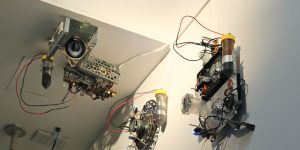
Colony
Darío Sacco (AR)
This sound bio-installation is formed by a colony of beings made up of disused technological parts and bio-units of decomposing organic material.
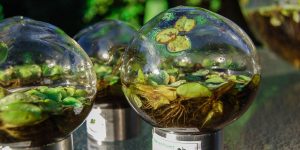
The Biosphere Project
Joaquín Fargas (AR)
The Biosphere Project consists of natural ecosystems isolated in sealed containers that only allow the external influence of heat and light.
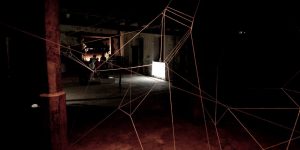
Acquired Immunity. Beyond Cultivamos Cultura
Virtual tours of the natural and social landscape around Cultivamos Cultura.

Earth Water Sky Artist Residency - Livestream
Haseeb Ahmed (US)
2020 Earth Water Sky artist in residence Haseeb Ahmed (Sky) will present his film “The Wind Egg” and discuss his body of work, notably on particulates and the particular narratives carried by the wind, which is also the subject of his residency at Science Gallery Venice. The presentation will be followed by a question and answer session open to the public, moderated by residency producer/curator Ariane Koek.
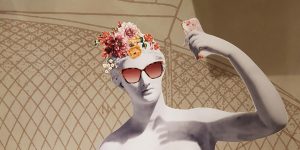
Exponential Mindset: The Skills of an Exponentialist
Niki Ernst, Eveline Wandl-Vogt
A 4-Sessions dive deep into the Exponential Mindset. An interaction series to consider the SDGs from an exponential growth strategies perspective.
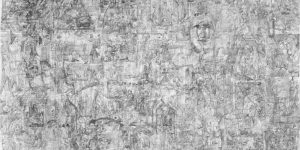
Creative Question Challenge: Quietly Subversive
Ciprian Mureșan (RO), Sanneke Stigter (NL), Corina Bucea (RO)
"Lasst uns beenden, was wir begonnen haben." Auf diese Weise stellt die UNO ihr erstes Ziel für nachhaltige Entwicklung vor - das Ende der Armut in allen Formen und Dimensionen bis 2030. Die 17 Ziele der Nachhaltigen Entwicklung und ihre 169 Teilziele wurden als ein ausuferndes, missverständliches Durcheinander großer Absichten beschrieben. Allein der Titel der Entwicklungsagenda - "Unsere Welt umgestalten" - verströmt utopische Ambitionen. Er wurde 2015 von 193 Nationen angenommen. Fünf Jahre später und mit zehn verbleibenden Jahren: Wie wird sich unsere Welt verändern?

Creative Question Challenge: Embodied perception and life as movement
Alexandra Pirici (RO), Paco Calvo (ES), Corina Bucea (RO)
"Lasst uns beenden, was wir begonnen haben." Auf diese Weise stellt die UNO ihr erstes Ziel für nachhaltige Entwicklung vor - das Ende der Armut in allen Formen und Dimensionen bis 2030. Die 17 Ziele der Nachhaltigen Entwicklung und ihre 169 Teilziele wurden als ein ausuferndes, missverständliches Durcheinander großer Absichten beschrieben. Allein der Titel der Entwicklungsagenda - "Unsere Welt umgestalten" - verströmt utopische Ambitionen. Er wurde 2015 von 193 Nationen angenommen. Fünf Jahre später und mit zehn verbleibenden Jahren: Wie wird sich unsere Welt verändern?

Community Creates Mobility: Participatory Speculative Critical Design beyond dream-making for the City.
Eveline Wandl-Vogt, Niki Ernst, Claudia Falkinger, Peter Zehetbauer, Wolfgang Preisinger, Elisabeth Füssl, Penesta Dika, Aleyda Rocha Sepulveda; lightning talk: Jeffrey Schnapp
Co-Envisioning Mobility Infrastructures - The challenges facing cities around the globe are complex and multidisciplinary by nature. Attempting to solve them in conventional linear ways is insufficient for addressing these manifold human-environment relationships that are at the heart of these challenges. Alternative approaches are necessary.
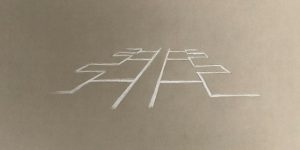
Affordances of spaces
Elena Cologni
Accelerating Knowledge for the SDGs: Life streamed session - The work developed from a two-year long investigation into ‘architectures of difference’, is based on a postcard in sculptor Barbara Hepworth’s collection (circa 1952), in a note she refers to this in terms of the space between people: it’s relational and social aspects. The piece also evolved from considering the punctuations found in our cities’ grounds, and how these contribute to developing a sense of attachment and belonging, which is at the basis of wellbeing (eg. Lived Dialectics, 2016, MuseumsQuartier, Vienna; Seeds of Attachment, 2016/18, New Hall Art Collection, Cambridge).
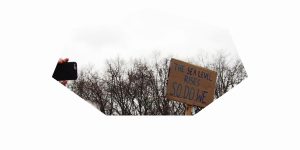
Creative Question Challenge: Radical change by working together
Kat Austen (UK/DE), Indrė Žliobaitė (FI), Laurence Gill (IE), Andrew Newman (AT/AU)
"Lasst uns beenden, was wir begonnen haben." Auf diese Weise stellt die UNO ihr erstes Ziel für nachhaltige Entwicklung vor - das Ende der Armut in allen Formen und Dimensionen bis 2030. Die 17 Ziele der Nachhaltigen Entwicklung und ihre 169 Teilziele wurden als ein ausuferndes, missverständliches Durcheinander großer Absichten beschrieben. Allein der Titel der Entwicklungsagenda - "Unsere Welt umgestalten" - verströmt utopische Ambitionen. Er wurde 2015 von 193 Nationen angenommen. Fünf Jahre später und mit zehn verbleibenden Jahren: Wie wird sich unsere Welt verändern?

Green Nonsense
Green Nonsense ist ein kreatives Food Labor, bei dem die Wissensvermittlung von zentraler Bedeutung ist. Es soll das vom Aussterben bedrohte Wissen über wilde Heilkräuter, die in der freien Natur wachsen und im Bereich Traditionelle Europäische Medizin Anwendung finden, als „food und experience design“ erklärt werden.

Fermenting Futures: BioArt and Yeast Biotechnology in Uncertain Times
Anna Dumitriu (UK), Alex May (UK)
"Fermenting Futures" ist ein Projekt der Künstler*Innen Anna Dumitriu und Alex May, das die Bereiche BioArt, synthetische Biologie, digitale Technologien, Skulptur, Kunsthandwerk und Installation erforscht und die Bedeutung der Hefe-Biotechnologie aus kultureller Perspektive untersucht.
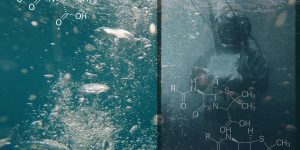
Meet the S+T+ARTS Community: Art & Sience Collaborations
Ingeborg Reichle (AT), Michael Sauer (AT), Robertina Šebjanič (SI), Gjino Šutić (HR)
Wenn KünstlerInnen, WissenschaftlerInnen und wissenschaftliche Forschungseinrichtungen in gemeinsamen Projekten zusammenarbeiten, führt die Kollision von Methoden oft zu neuen und spannenden Perspektiven für die künstlerische und wissenschaftliche Praxis.
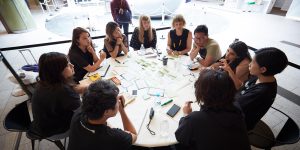
Creative Question Challenge: Ecology – Technology
Alexandra Daisy Ginsberg (UK), Simon Weckert (DE), Kazune Iwasa (JP)
Die Creative Question Challenge (CQC) ist ein neues Brainstorming-Format, bei dem die ReferentInnen in einem 30-minütigen Dialog kreative Fragen erforschen und präsentieren.
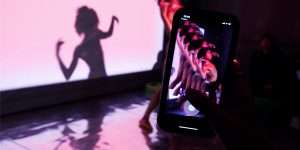
Exhibition: Augmented Empathy
As part of The Living Planet, FACT’s programme focusing on the non-human, the artist collective Keiken have developed a multi-layered participatory project called Augmented Empathy in collaboration with FACT’s Learning team.
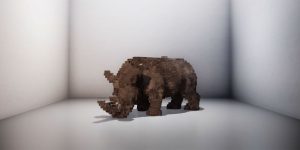
Exhibition: And Say the Animal Responded?
This immersive exhibition brings you face to face with animals from around the world through film, art and creative technology.

Klimawandel vom Weltraum – 360 Grad
ESRIN, ESA Centre for Earth Observation (IT), Ars Electronica Solutions (AT)
Die Erdbeobachtungseinrichtung der ESA (ESRIN) in Frascati, Italien, beherbergt das Φ-Experience – ein Multimedia-Zentrum, das eine Einrichtung zur Visualisierung von Erdbeobachtungsdaten umfasst. Das Ziel des "Φ-Experience" ist es, interaktive Anzeigetechnologien zu nutzen, um das Bewusstsein und die Sichtbarkeit der Erdbeobachtungsprogramme und -anwendungen der ESA zu erhöhen.
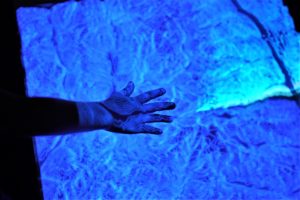
Klimanotstand in Vorarlberg: eine Reise zur Ausstellung „Global Shift – Die Welt im Wandel“ in Bregenz
Der 2019 ausgerufene Klimanotstand in Vorarlberg adressiert nicht nur die Politik, auch die Kunst und Kulturszene hat Einsatz gegen die globale Erwärmung ihren Beitrag zu leisten. Die Ausstellung „Global Shift – Die Welt im Wandel“ beinhaltet verschiedene interaktive und partizipative Stationen. Diese beobachten, dokumentieren und kommentieren die Spuren, die die Nutzung unserer Lebensgrundlagen hinterlassen.


